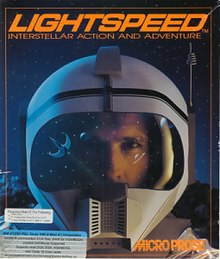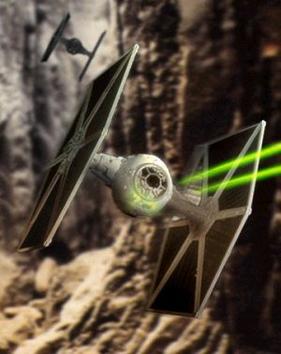
The TIE fighter or Twin Ion Engine fighter is a series of fictional starfighters featured in the Star Wars universe. TIE fighters are depicted as fast, agile, yet fragile starfighters produced by Sienar Fleet Systems for the Galactic Empire and by Sienar-Jaemus Fleet Systems for the First Order and the Sith Eternal. TIE fighters and other TIE craft appear in Star Wars films, television shows, and throughout the Star Wars expanded universe. Several TIE fighter replicas and toys, as well as a TIE flight simulator, have been produced and sold by many companies.
Battlefleet Gothic is a naval miniature wargame that was produced by Games Workshop from 1999 to 2013 with Andy Chambers as the primary developer. A spin-off of the science-fantasy setting of Warhammer 40,000, the game has players command fleets of large spaceships belonging to one of several spaceborne factions. Although the wargame's miniatures and rulebooks are no longer supported by Games Workshop, two video game adaptations have been made since its cancellation in 2013.
Renegade Legion is a series of science fiction games that were designed by Sam Lewis, produced by FASA, and published from 1989 to 1993. The line was then licensed to Nightshift games, a spin-off of the garage company Crunchy Frog Enterprises by Paul Arden Lidberg, which published one scenario book, a gaming aid, and three issues of a fanzine-quality periodical before reverting the license.

Full Thrust is a science fiction strategy wargame written by Jon Tuffley and published by Ground Zero Games of England. It is usually played with miniature figurines representing imaginary starships, although cardboard chits representing the vessels can also be used. Unlike many games, the publishers encourage the use of any miniatures rather than only "official" ones, though Ground Zero Games does also sell an extensive miniature range.

Raptor: Call of the Shadows is a vertically scrolling shooter developed by Cygnus Studios and published by Apogee Software. Its working title was "Mercenary 2029". It was released on April 1, 1994 for MS-DOS compatible systems. The first episode of the game, "Bravo Sector", was distributed as shareware. The other two episodes were sold commercially.

FreeSpace 2 is a 1999 space combat simulation computer game developed by Volition as the sequel to Descent: FreeSpace – The Great War. It was completed ahead of schedule in less than a year, and released to very positive reviews, but the game became a commercial failure, and was described by certain critics as one of 1999's most unfairly overlooked titles.
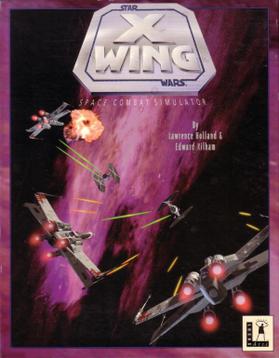
Star Wars: X-Wing is a space simulation video game, the first of the X-Wing combat flight simulation games series. The player's character flies starfighters, including the X-wing, for the Rebel Alliance. The narrative precedes and parallels the events of Star Wars Episode IV: A New Hope.

O.R.B: Off-World Resource Base is a space strategy game developed and published by Strategy First. Much like Homeworld and its sequel Homeworld 2, units can move in all three spatial dimensions.
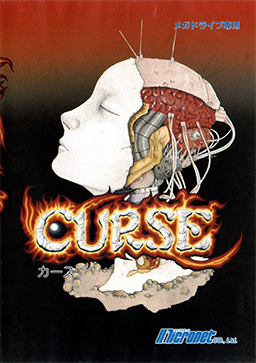
Curse is a 1989 video game developed by Micronet for the Mega Drive video game console. It is a horizontally scrolling shooter with five levels. Although an American release was planned, it was never officially released outside Japan.

Haegemonia: Legions of Iron, or Hegemonia: Legions of Iron, is a 3D real-time strategy game developed by Digital Reality for Microsoft Windows, and by Microïds for OS X, iOS, and Android.
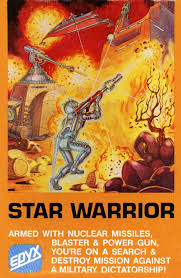
Star Warrior is a 1980 science fiction role-playing video game written and published by Automated Simulations for the Apple II, TRS-80, and Atari 8-bit family. The game is branded as part of the Starquest series, consisting of Star Warrior and the otherwise unrelated Rescue at Rigel.

Starfleet Orion is a 1978 science fiction strategy game written and published by Automated Simulations. It appears to be the first space-themed strategy game sold for microcomputer systems. The game was originally written in BASIC for the Commodore PET, but later ported to other early home computer platforms including the TRS-80 and Apple II. The game was something of a success, leading to a string of successes for the company, notably the major hit Temple of Apshai.

Invasion Orion is a 1979 science fiction strategy game written and published by Automated Simulations. It is one or two player sequel to the original two-player Starfleet Orion which was published in late 1978. The game was written in BASIC for the Commodore PET and TRS-80 and ported to the Atari 8-bit family and Apple II.

Star Wars: TIE Fighter is a 1994 Star Wars space flight simulator and space combat video game, a sequel in the Star Wars: X-Wing series. It places the player in the role of an Imperial starfighter pilot during events that occur between The Empire Strikes Back and Return of the Jedi.
Star Wars: X-Wing is a series of space flight simulator video games based in the Star Wars media franchise that attempts to simulate the fictional experience of starfighter combat, while remaining faithful to the movies. The player took the role of a pilot of the Rebel Alliance, and, in later games, the Galactic Empire. To complete the games, players must complete missions such as simple dogfights with opposition starfighters, reconnaissance and inspection tasks, escort duty for freighters or capital ships, or attacks on larger opposition ships. In addition to dogfighting designed to resemble the free-wheeling duels of World War I, the games also offered the challenge of managing power resources and wingmen, and using weapons effectively.

Hyperspeed is a space combat role-playing video game developed by MicroProse Software in 1991 for DOS, and is a sequel to Lightspeed.

Starpoint Gemini 2 is a space trading and combat simulator developed by the Croatian-based Little Green Men Games development studio. It is a direct sequel to Starpoint Gemini, which was released in 2010.

Artemis: Spaceship Bridge Simulator is a multiplayer co-operative spaceship simulation game created by Thomas Robertson for Windows, iOS, and Android devices. The game is designed to be played between three and eight players over a local area network, with each player using a separate computer that provides a different spaceship bridge station, such as helm control or engineering.
Starfall Online is an MMO real-time strategy video game with wargame elements, that mixes intense tactical combat with in-depth spaceship customization. The project is developed by independent Russian company Snowforged Entertainment.
